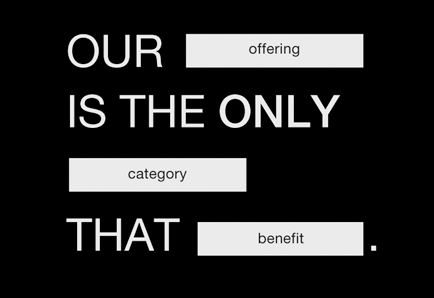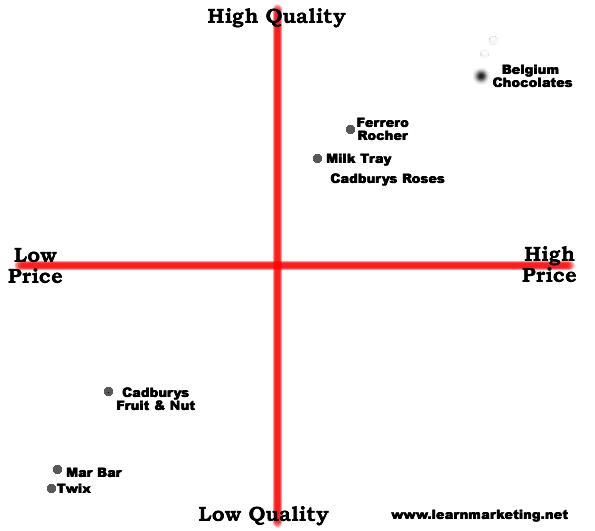When Lewis Carroll’s Alice asks the Chesire Cat how to find her way, he replies, “If you don’t care where you’re going, it doesn’t make any difference which path you take.”
It’s the same with public relations program. A well-crafted positioning statement can make or break your company’s communications. Without strategic focus, companies can sound like a bad choir singing songs from different music sheets completely out-of-tune, impressing no one, getting nowhere.
Proper positioning is the cornerstone of effective marketing. Your positioning statement is the core message you want to communicate consistently in every medium – print, online, tradeshows, presentations and so forth. A finely-tuned positioning statement provides focus and direction to your PR efforts and helps you achieve a better position in your target market’s mind.
While positioning is a matter of perception, it’s based on prudent thinking and ruminating through the issues such as the strengths and weaknesses of your company and your competition, the needs of your target market, and the pain points your company solves for customers. A thorough analysis is important because it allows you to better understand how to be seen and heard in an overcrowded marketplace and target your efforts to your primary audience(s).
So how do you develop a position? This can be done by using a market positioning formula first outlined by marketing guru Geoff Moore in “Crossing the Chasm” more than a dozen years ago. The formula is:
- For (target customer)
- Who (statement of need or opportunity)
- The (product name) is a (product category)
- That (statement of key benefit – that is compelling reason to buy)
- Unlike (primary competitive alternative)
- Our product (statement of primary differentiation)
This exercise is important because it also gets your company to agree on target audiences, rationale for your product and the end-users. Finding the right path takes introspection, cooperation, consensus-building and an “outside-in” perspective, making a PR agency valuable.
Another way to devise a well-crafted positioning statement is to ask the following questions:
1.Who are you?
2.What business are you in?
3.For whom?
4.What is needed by the market you serve?
5.Against whom do you compete?
6.What’s different about your business?
7.What unique benefit does a customer derive from your products or services?
8.What is the one thing you want to be known for among your target audience?
Or if you want to be really succinct, use this one by Marty Neumeier:

Surprisingly few companies agree when it comes to answering these questions. And when they do, the statement is not clear, simple or succinct enough to resonate with key audiences. It can be extremely challenging to narrow a company’s focus but determining your unique points of differentiation is vital! If your team can’t determine the differences, persevere and dig deeper.
One of my favourite examples involves cold medicine. Cold medicine isn’t new, yet Nyquil was able to successfully position itself as the “night time cold medicine” and steal a significant market share from the cold medicine leader at the time. Apparently the leader didn’t own the night time market. Was Nyquil different than the leading cold medicine? Not really. But it is PERCEIVED differently in the mind of consumers and that’s what matters. Imagine what you can do with your positioning if you have unique differentiators that set you apart from your competition.
How can you develop positioning and get management buy-in? First, circulate copies of the short book, a marketing classic, “Positioning: The Battle for Your Mind” by Reis and Trout. Second, circulate an email outlining the benefits of obtaining a consensus. (The most understandable benefits are time and money saved by the company in tactical execution because the most successful outcomes have consistent and focused messaging.)
Then arrange a meeting where you ask everyone to prepare draft answers to the above formula and eight questions in advance. Collect your team’s answers and organize them so that they focus on contrasts and similarities among ideas. When everyone is together, explore the nuances and develop a final positioning statement, key messages and supporting statements that are based on similar ideas (examples, facts & figures, statistics, etc). Test your new positioning statement with a few trusted allies that represent your target market. Lastly, fine-tune your statement and messages as needed before final review with the team.
Once your company has reached agreement, apply the positioning statement to ALL communications. Any communication or marketing plans that include tactics not reflecting your positioning and key messages are “off-strategy” and should be reconsidered. The more consistent your strategy, the better the payoff will be in the long run in achieving long-term communications success.
Click here to see what kind of positioning one freelance writer developed for his business.
And for people who are more visual, here’s an example of a brand or perceptual map below using chocolate as the example. (You can change the titles of the axes to whatever is pertinent to your organization and industry.
Good luck and please feel free to call/email me if you have any questions or need help developing your perception map and positioning statement. I have a knack for honing-in on on a company or individual’s core essence!



